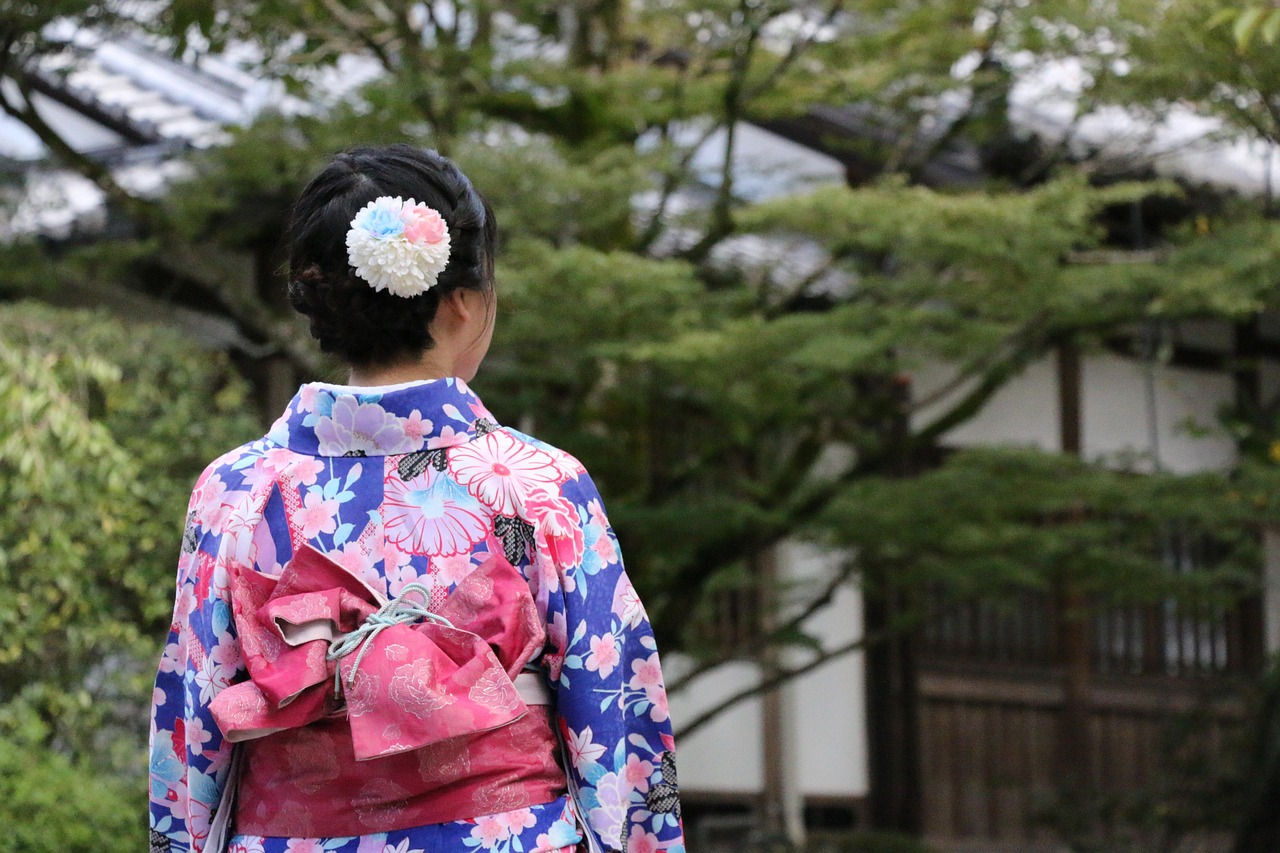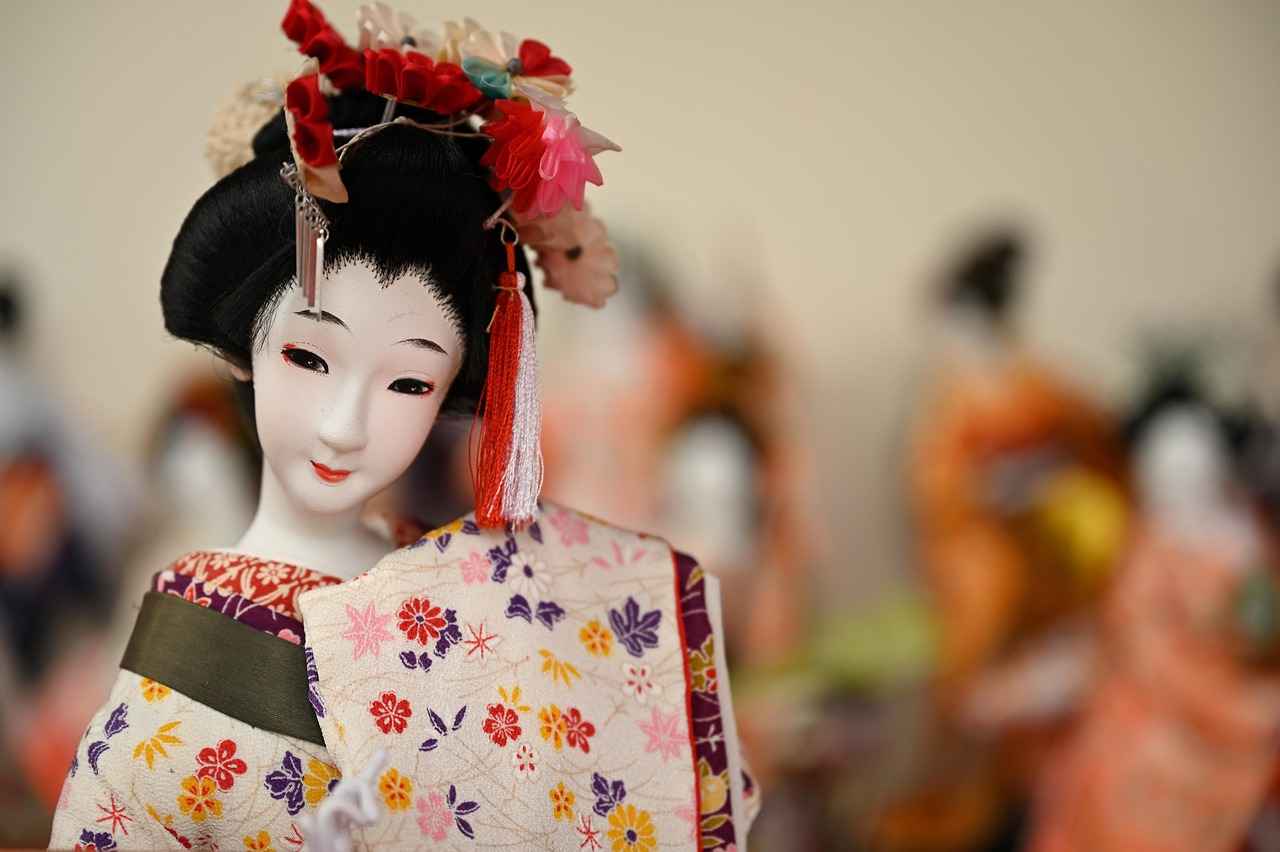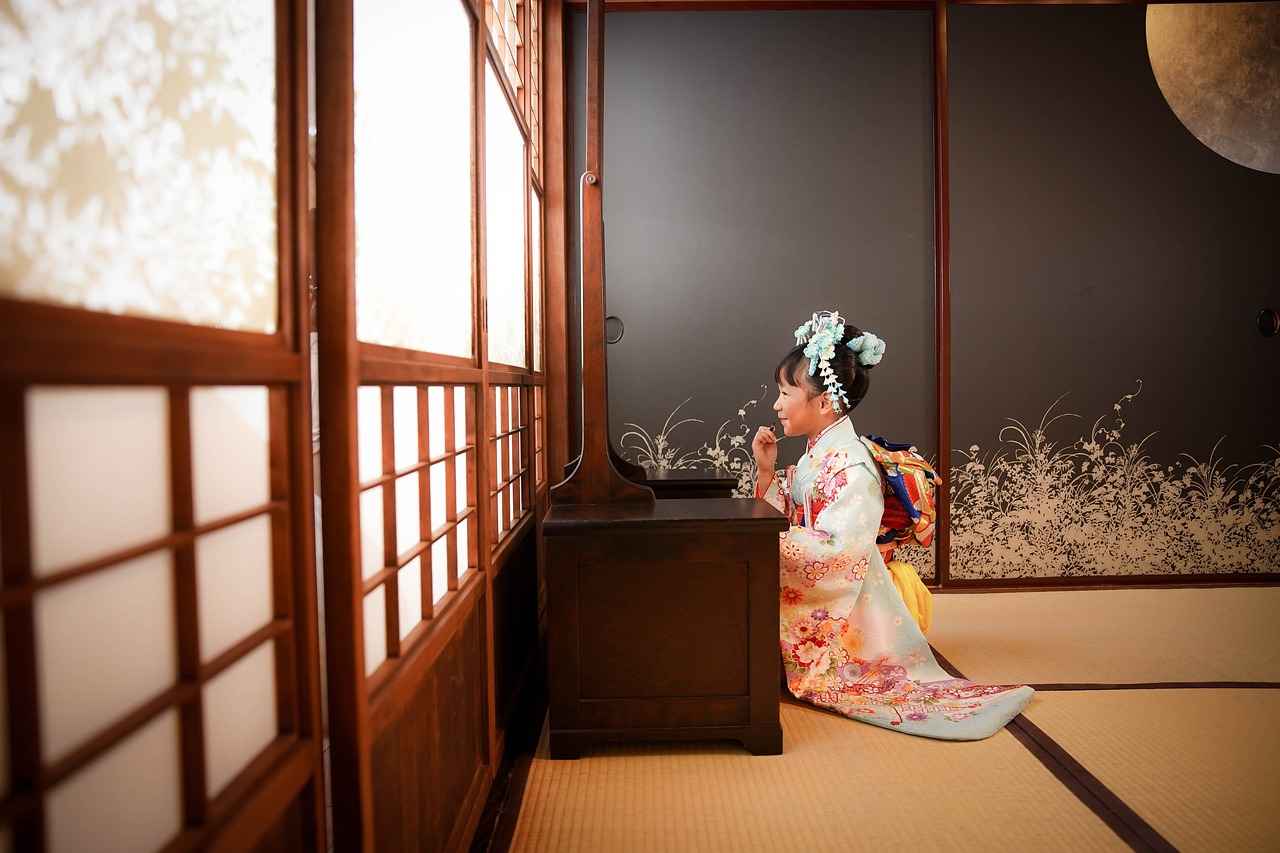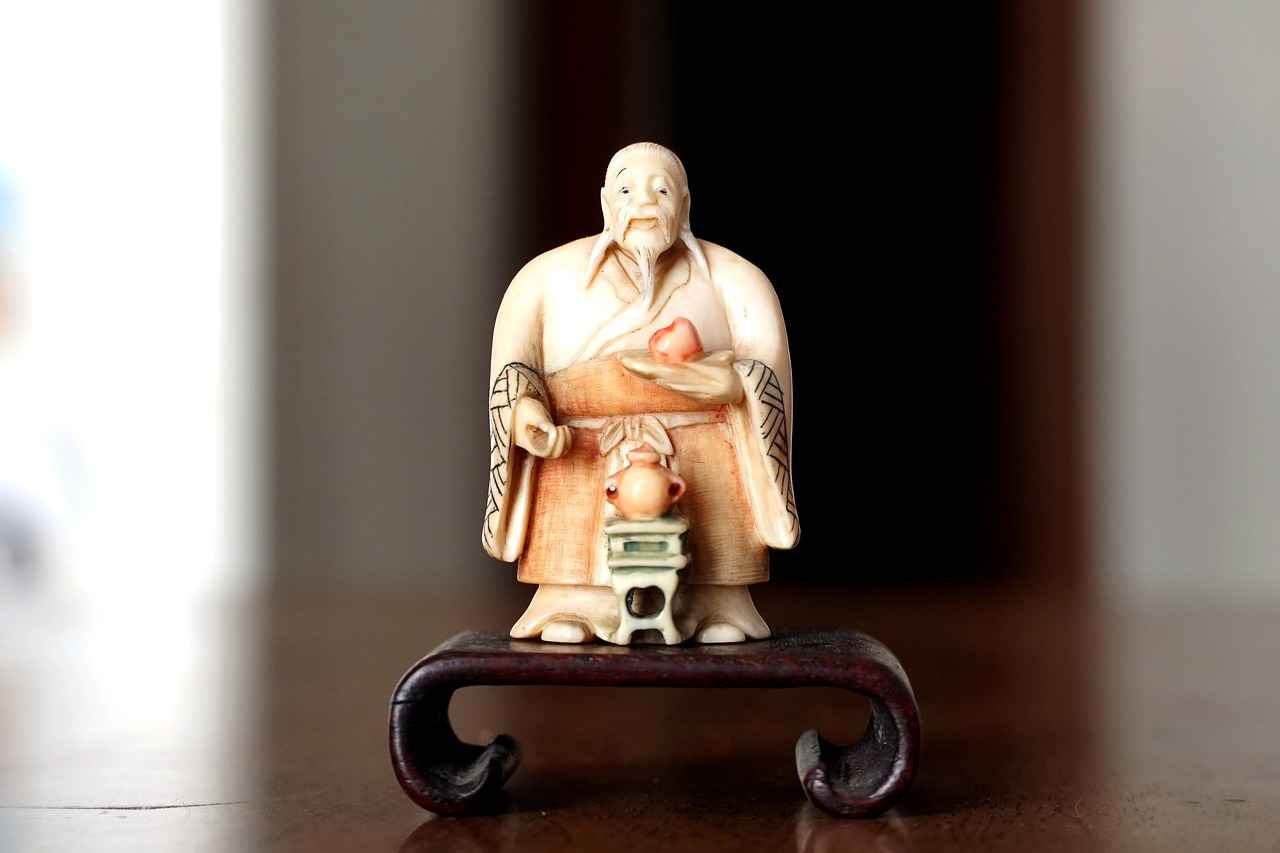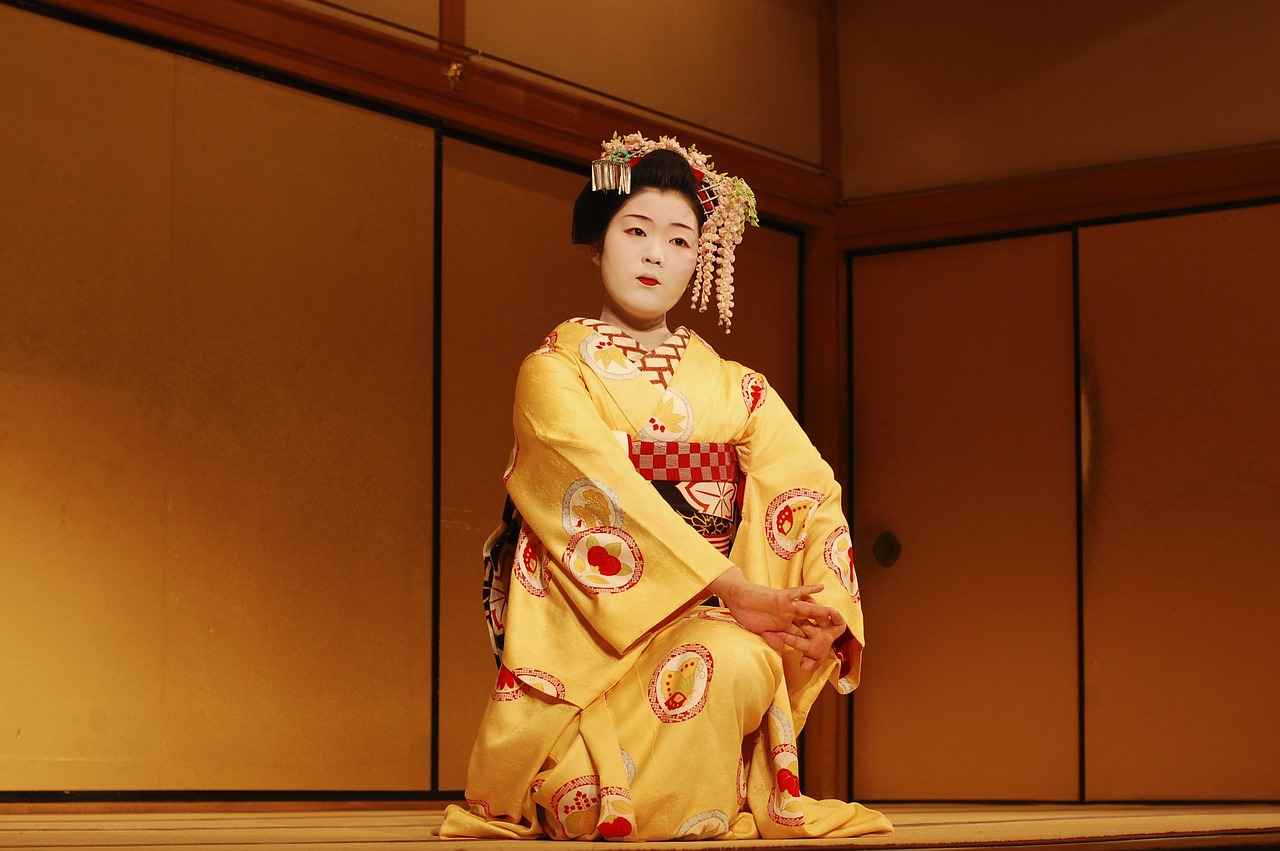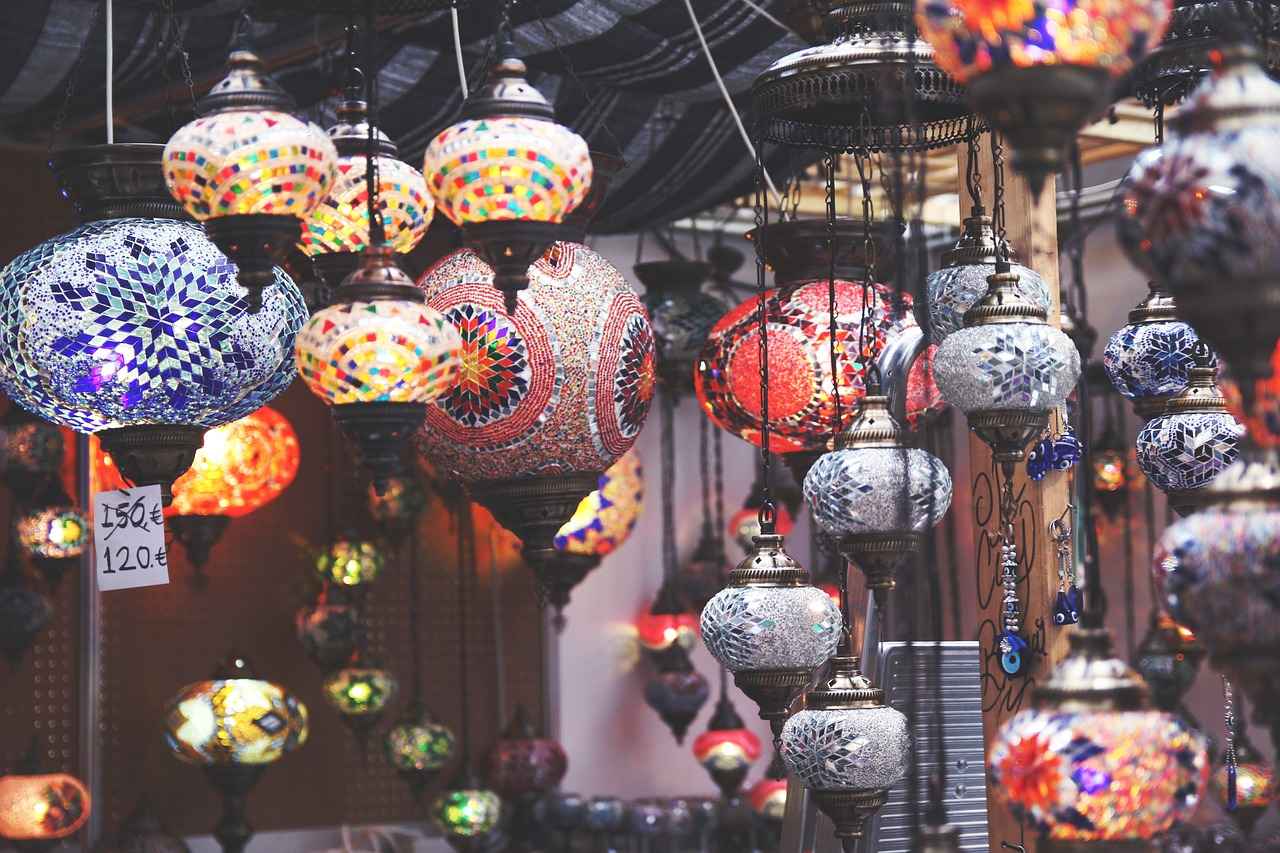This article explores the versatility of silk kimonos, offering insights on styling, occasions, and care tips to help you seamlessly integrate this elegant piece into your everyday outfits.
Silk kimonos, originally traditional Japanese garments, have become a fashionable staple in modern wardrobes. Their rich history and cultural significance add depth to their appeal, making them not just clothing but a statement piece. Understanding the different types of silk kimonos available can help you appreciate their beauty and functionality.
When selecting the perfect silk kimono, consider factors such as color, pattern, and fit. A well-chosen kimono should reflect your personal style while also being appropriate for various occasions. For instance, solid colors may offer a more classic look, while vibrant patterns can express your unique personality.
To elevate your everyday style, think about how to style your silk kimono. For casual daywear, pairing it with jeans and a simple top can create a chic yet relaxed look. Alternatively, for evening events, a silk kimono can be draped over a sleek dress, adding an element of sophistication.
Proper care is essential to maintain the beauty of your silk kimono. Always follow washing and drying tips specific to silk to prevent damage. Additionally, consider effective storage solutions to keep your kimono in pristine condition when not in use.
In conclusion, incorporating a silk kimono into your wardrobe can transform your style. With the right choices and care, this timeless piece can be enjoyed for years to come. Embrace the elegance of silk kimonos and let them enhance your fashion journey.
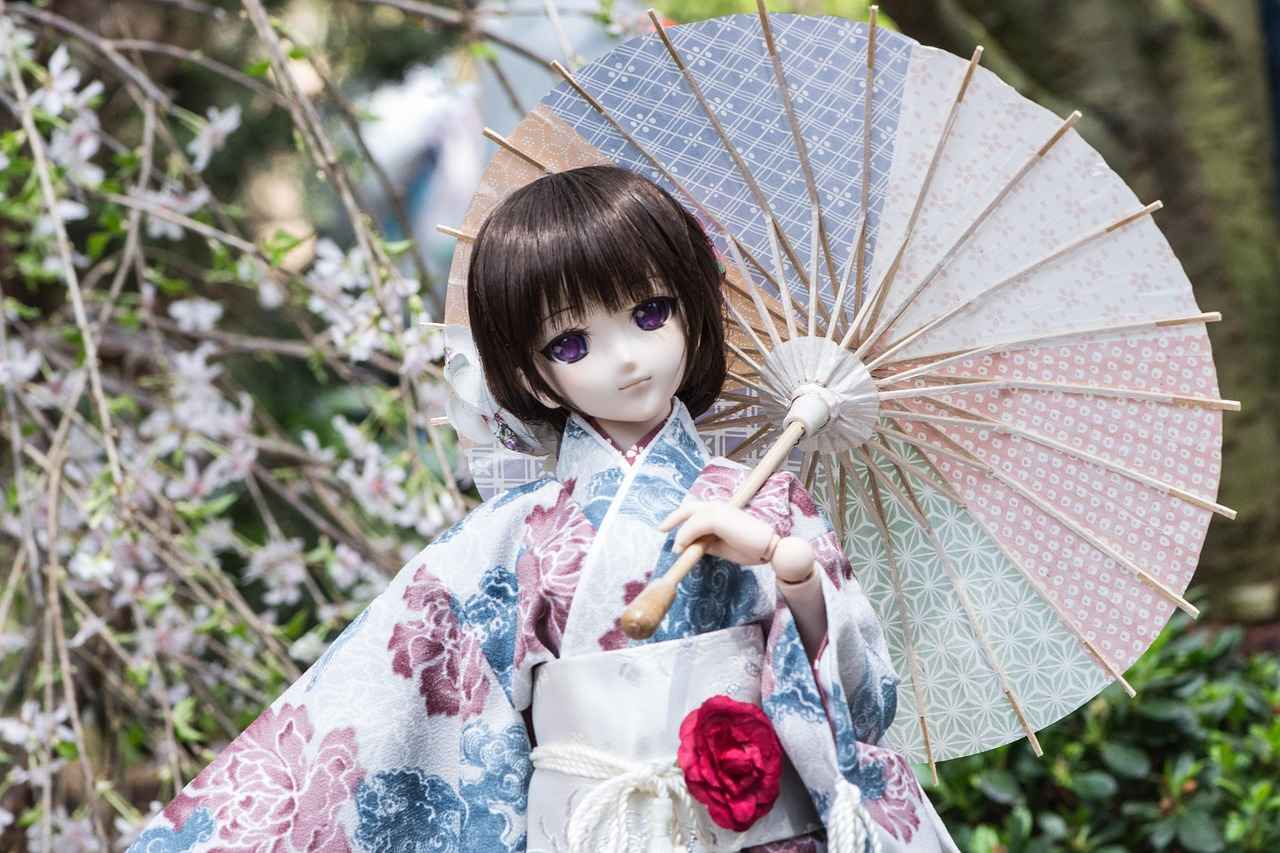
Understanding the Silk Kimono
Silk kimonos are not just traditional Japanese garments; they are a symbol of elegance that has transcended time and culture. Originating from Japan, these exquisite pieces have undergone significant evolution, transforming into fashionable wardrobe staples admired worldwide. Their rich history dates back to the Heian period (794-1185), where they were worn by the aristocracy, showcasing intricate designs and vibrant colors.
Today, silk kimonos are cherished for their versatility and ability to blend seamlessly into modern fashion. They come in various styles, including:
- Hifu: A traditional kimono with a long, flowing silhouette.
- Yukata: A casual summer kimono made from cotton, often worn at festivals.
- Tomesode: A formal kimono featuring intricate patterns, typically worn by married women.
Each style serves a unique purpose, allowing wearers to express their individuality while honoring tradition. The fabric quality of silk adds a luxurious touch, making kimonos suitable for both casual and formal occasions.
Furthermore, the cultural significance of silk kimonos cannot be overstated. They are often worn during important events such as weddings, tea ceremonies, and traditional festivals, symbolizing respect for heritage and craftsmanship. In contemporary fashion, designers have embraced the kimono silhouette, incorporating it into everyday wear, thus making it a timeless piece that appeals to diverse audiences.
In conclusion, understanding the silk kimono’s historical and cultural roots enhances its appreciation in modern fashion. As you explore the world of silk kimonos, you’ll discover not only their beauty but also their enduring legacy in the realm of style.

Choosing the Right Silk Kimono
Selecting the perfect silk kimono is an essential step in enhancing your wardrobe with this timeless piece. A silk kimono is not just a garment; it is a statement of style and elegance. To ensure you make the best choice, consider the following factors: color, pattern, and fit.
- Color: The color of your kimono can significantly influence your overall look. Opt for shades that complement your skin tone and can be easily paired with your existing wardrobe. For instance, pastel colors are ideal for a soft, feminine look, while bold colors can add a dramatic flair.
- Pattern: Patterns can range from traditional floral designs to modern geometric shapes. Choose a pattern that resonates with your personal style. If you prefer a classic look, go for floral or paisley patterns. Alternatively, abstract designs can showcase a contemporary vibe.
- Fit: The fit of your kimono is crucial for comfort and style. Ensure that the kimono drapes well on your body without being too tight or too loose. Pay attention to the length and sleeve style, as these aspects can affect your overall silhouette.
When selecting a silk kimono, it can also be helpful to consider the occasion. For casual outings, lighter colors and simpler patterns work well, while for formal events, opt for richer colors and intricate designs. Remember, a well-chosen kimono not only enhances your outfit but also reflects your unique personality.
In conclusion, taking the time to choose the right silk kimono can elevate your wardrobe. By carefully considering color, pattern, and fit, you can find a piece that not only complements your style but also becomes a cherished part of your clothing collection.
Color and Pattern Selection
plays a crucial role in defining your personal style, especially when it comes to incorporating a silk kimono into your wardrobe. The right hues and designs not only enhance your outfit but also reflect your personality and mood. Here’s how to make informed choices when selecting colors and patterns for your silk kimono.
Understanding Color Psychology: Different colors can evoke specific emotions and responses. For instance, blue often represents calmness and serenity, while red can signify passion and energy. When choosing a kimono, consider how you want to feel and what message you want to convey. A soft pastel might be perfect for a relaxed day, while a vibrant jewel tone could elevate your evening look.
Exploring Patterns: Patterns can add depth and interest to your outfit. Floral designs can evoke a sense of femininity and romance, while geometric patterns tend to convey modernity and sophistication. When selecting a pattern, think about your existing wardrobe. A floral kimono pairs beautifully with solid-colored dresses, while a geometric design can add a fun twist to a monochromatic outfit.
Mixing and Matching: Don’t be afraid to experiment with color combinations and patterns. A solid kimono can serve as a versatile base, allowing you to play with patterned tops or bottoms. Conversely, if your kimono features a bold print, consider keeping the rest of your outfit simple and understated to let the kimono shine.
Seasonal Considerations: Keep in mind that some colors and patterns are more suited to specific seasons. Light, airy colors like pastels are perfect for spring, while rich, deep hues like burgundy or emerald are ideal for fall. Stay updated on seasonal trends to ensure your kimono remains stylish and relevant throughout the year.
In conclusion, selecting the right colors and patterns for your silk kimono can enhance your overall aesthetic and express your individuality. By understanding color psychology, exploring various patterns, and considering seasonal trends, you can make choices that resonate with your personal style and elevate your wardrobe.
Solid vs. Patterned Kimonos
When choosing a silk kimono, one important decision revolves around whether to opt for a solid or patterned design. Each style carries its own set of advantages and disadvantages that can significantly influence your overall look and feel.
| Aspect | Solid Kimonos | Patterned Kimonos |
|---|---|---|
| Versatility | Highly versatile; can be paired with various outfits. | Can make a bold statement but may limit pairing options. |
| Style | Offers a minimalist and sophisticated look. | Brings vibrancy and personality to your ensemble. |
| Occasion | Suitable for both casual and formal events. | Best for occasions where you want to stand out. |
| Maintenance | Generally easier to maintain and clean. | Patterns may require more careful handling to avoid fading. |
Solid kimonos are often favored for their timeless elegance. They can effortlessly transition from day to night and pair well with a variety of outfits, making them a staple in any wardrobe. Their simplicity allows for easy accessorizing, whether you choose bold jewelry or a statement belt.
On the other hand, patterned kimonos can inject a dose of creativity and flair into your attire. Ideal for those who wish to express their unique style, these kimonos can feature intricate designs that tell a story or reflect cultural heritage. However, they might require more thought in terms of coordination with other clothing pieces.
Ultimately, the choice between solid and patterned kimonos should reflect your personal style and the context in which you plan to wear them. Consider your wardrobe needs, the occasions you attend, and your comfort with bold patterns versus classic solids. By weighing the pros and cons, you can make an informed decision that enhances your fashion repertoire.
Seasonal Color Trends
play a significant role in the fashion world, influencing not only the styles we choose but also the colors that dominate our wardrobes. When it comes to selecting a silk kimono, understanding these trends can enhance your fashion sense and ensure that your choices are both stylish and current.
Each season brings its own unique color palette, often inspired by nature, cultural events, and global fashion weeks. For example, spring often showcases soft pastels like blush pink and mint green, while summer leans towards vibrant hues such as coral and turquoise. In autumn, earthy tones like burnt orange and deep burgundy take center stage, followed by the cool and muted shades of winter like navy and charcoal. Keeping abreast of these trends can help you select a kimono that not only complements your personal style but also aligns with the current fashion climate.
To stay updated on seasonal trends, consider following fashion blogs, social media influencers, and trend forecasting agencies. These sources often provide valuable insights into which colors are gaining popularity and how to incorporate them into your wardrobe. Additionally, visiting local boutiques or department stores can give you a firsthand look at trending colors and styles.
When selecting a kimono, think about how the chosen color will interact with your existing wardrobe. A neutral kimono can serve as a versatile piece, easily paired with various outfits, while a boldly colored kimono can become a statement piece that adds flair to your look. Remember, the key is to choose colors that not only reflect the season but also resonate with your personal aesthetic.
In conclusion, by paying attention to , you can make informed decisions when choosing your silk kimono, ensuring that you remain stylish and relevant throughout the year. Embrace the colors of the season and let your kimono reflect your unique style.
Finding the Right Fit
When it comes to wearing a silk kimono, is crucial for both comfort and style. A well-fitted kimono not only enhances your silhouette but also boosts your confidence. Understanding how to select the perfect size and style based on your body type can elevate your overall look.
- Know Your Measurements: Start by taking accurate measurements of your bust, waist, and hips. This will help you determine the appropriate size when shopping for a kimono.
- Consider Your Body Type: Different styles of kimonos suit different body types. For example, if you have a more athletic build, opt for a kimono with a cinched waist or a belt to create shape.
- Length Matters: The length of the kimono can significantly impact your appearance. Longer kimonos can elongate your frame, while shorter styles can provide a more casual look. Choose a length that complements your height and proportions.
- Fabric and Flow: The way the fabric drapes on your body is essential. Silk has a natural flow, which can enhance your movement. Ensure that the kimono allows for comfortable movement without feeling restrictive.
- Try Before You Buy: Whenever possible, try on different styles to see how they fit. Pay attention to how the sleeves and shoulders align with your body. A kimono should feel comfortable and allow you to move freely.
In summary, finding the right fit for a silk kimono involves understanding your body type, taking accurate measurements, and considering the style and length that best suits you. By following these guidelines, you can maximize both comfort and elegance in your kimono attire.

Styling Your Silk Kimono
Silk kimonos are not just elegant pieces of clothing; they are incredibly versatile and can be styled in numerous ways to suit various occasions. Whether you are dressing for a casual day out or an elegant evening event, a silk kimono can elevate your outfit. Here are some creative ideas to incorporate kimonos into your wardrobe:
- Layering for Casual Looks: Pair your silk kimono with a simple white t-shirt and jeans for a chic, laid-back outfit. This combination is perfect for brunch with friends or a casual day at the park.
- Bohemian Vibes: For a boho-inspired look, wear your kimono over a flowy maxi dress. Choose a kimono with vibrant patterns to add a pop of color and texture to your ensemble.
- Office Ready: A silk kimono can also be a stylish addition to your work attire. Layer it over a fitted blouse and tailored trousers for a polished yet comfortable look.
- Evening Glam: Transform your kimono into a statement piece for formal occasions by pairing it with a sleek cocktail dress. Opt for a kimono with intricate details or embellishments to make a lasting impression.
Accessorizing Your Kimono: The right accessories can enhance the overall look of your kimono outfit. Consider adding a statement belt to cinch your waist, or opt for bold jewelry to draw attention to your ensemble.
Footwear Choices: The type of shoes you wear can drastically change the vibe of your outfit. For casual looks, sandals or sneakers work well, while heels or elegant flats can elevate your evening attire.
In conclusion, the silk kimono is a versatile wardrobe staple that can be styled in countless ways. By experimenting with different combinations and accessories, you can create unique looks that reflect your personal style.
Casual Daywear Looks
Incorporating a silk kimono into your everyday wardrobe can be a game-changer for achieving a stylish yet relaxed look. Whether you’re running errands, meeting friends for coffee, or enjoying a leisurely day at home, a kimono can add a touch of elegance to even the most casual outfits. Here are some creative ideas to help you style your kimono for day-to-day activities:
- Kimono with Jeans: Pair your silk kimono with a simple white t-shirt and your favorite jeans. This combination is effortless and chic, perfect for a casual outing.
- Layer Over a Dress: For a more feminine look, layer your kimono over a casual sundress. This adds dimension to your outfit while keeping you comfortable.
- Shorts and a Tank Top: On warmer days, wear your kimono with high-waisted shorts and a fitted tank top. This ensemble is playful and perfect for summer outings.
- Chic Athleisure: Elevate your athleisure look by throwing a silk kimono over your workout gear. This adds a stylish twist while maintaining comfort.
- Footwear Choices: Consider pairing your kimono with stylish sneakers for a laid-back vibe or opt for sandals for a more polished appearance.
In addition to these outfit ideas, consider the color and pattern of your kimono. A solid color can serve as a versatile piece that matches various outfits, while a patterned kimono can become the statement piece of your look. Don’t shy away from experimenting with different textures and accessories to create a unique style that reflects your personality.
In conclusion, integrating a silk kimono into your casual daywear can significantly enhance your style. With the right pairing, you can achieve a look that is both chic and comfortable, making your everyday fashion feel special.
Evening and Formal Styles
Silk kimonos are not just a fashion statement; they are a symbol of elegance that can transform your evening wear. When styled correctly, a silk kimono can make you stand out at formal events, adding an air of sophistication that is hard to match. Here are some tips on how to style your silk kimono for those special occasions.
- Layering for Depth: Pair your silk kimono with a fitted dress or tailored trousers to create a layered look that adds depth and interest. Opt for a solid color outfit underneath to let the kimono’s intricate patterns shine.
- Accessorizing Wisely: Choose statement jewelry, such as bold earrings or a chunky necklace, to complement your kimono. A simple clutch or an elegant handbag can also enhance your overall appearance without overwhelming it.
- Shoe Selection: The right footwear is crucial. Consider wearing elegant heels or stylish flats that match the color palette of your kimono. This will help elongate your silhouette and keep the focus on your outfit.
- Playing with Length: Long kimonos can create a dramatic effect, while shorter styles can be more playful. Choose a length that suits your body type and the formality of the event.
- Color Coordination: When selecting a kimono, consider the event’s color scheme. Jewel tones and metallics are perfect for evening gatherings, while softer hues work well for more intimate settings.
For formal events, the key is to maintain a balance between the kimono and the rest of your outfit. A silk kimono can serve as a stunning statement piece, so ensure that the rest of your attire complements rather than competes with it.
In conclusion, incorporating a silk kimono into your evening wear can elevate your style and ensure you make a lasting impression. With the right styling tips and attention to detail, you can embrace the elegance that a silk kimono brings to formal occasions.

Caring for Your Silk Kimono
Proper care is essential to maintain the beauty and longevity of your silk kimono. This luxurious garment deserves special attention to ensure it remains a cherished part of your wardrobe for years to come. Below are practical tips on washing, storing, and preserving your silk kimono.
Washing Your Silk Kimono
- Gentle Hand Washing: Always opt for hand washing your silk kimono in cold water with a mild detergent specifically designed for silk. Avoid harsh chemicals that can damage the delicate fibers.
- Spot Cleaning: For minor stains, use a soft cloth dampened with cold water and a little detergent to gently dab the affected area. Rinse with clean water.
- Avoid Machine Washing: Never machine wash or tumble dry your silk kimono, as this can cause shrinkage and damage to the fabric.
Drying Techniques
- Air Drying: After washing, lay your kimono flat on a clean, dry towel to absorb excess water. Avoid wringing it out, as this can distort the shape.
- Hang to Dry: If you prefer hanging, use a padded hanger to maintain the silhouette, and ensure it’s in a shaded area away from direct sunlight to prevent fading.
Storage Solutions
- Use a Garment Bag: Store your silk kimono in a breathable garment bag to protect it from dust and pests. Avoid plastic bags that can trap moisture.
- Keep it Dry: Ensure your storage area is cool and dry. Humidity can lead to mold or mildew, which can ruin silk.
- Regular Checks: Periodically check your kimono for any signs of damage or pests, addressing any issues immediately.
Preserving the Fabric
- Avoid Direct Sunlight: Prolonged exposure to sunlight can cause colors to fade. Store your kimono away from direct light.
- Iron with Care: If necessary, iron your silk kimono on the lowest heat setting while it’s still slightly damp, using a cloth between the iron and the fabric to prevent burns.
By following these care tips, you can ensure that your silk kimono remains a stunning and elegant addition to your wardrobe for many years to come.
Washing and Drying Tips
When it comes to caring for your silk kimono, proper washing and drying techniques are crucial to preserving its beauty and longevity. Silk is a delicate fabric that requires special handling to avoid damage. Here are some essential tips to ensure your kimono remains in pristine condition:
- Hand Wash Only: Always opt for hand washing your silk kimono. Fill a basin with cool water and add a few drops of a gentle detergent specifically designed for silk. Avoid using bleach or harsh chemicals, as they can harm the fabric.
- Gentle Agitation: Submerge the kimono in the soapy water and gently agitate it. Avoid scrubbing or twisting the fabric, as this can lead to stretching or tearing.
- Rinse Thoroughly: After washing, rinse the kimono in cool, clean water until all soap is removed. It’s important to ensure no detergent residue remains, as this can cause discoloration over time.
- Drying Techniques: Never wring out your silk kimono. Instead, lay it flat on a clean, dry towel and roll the towel to absorb excess water. Unroll and hang the kimono on a padded hanger to air dry away from direct sunlight, which can fade colors.
- Ironing: If your kimono is wrinkled after drying, use a low-temperature iron while placing a cotton cloth between the iron and the silk to prevent direct heat contact. Always iron on the reverse side of the fabric.
By following these care tips, you can maintain the luster and integrity of your silk kimono, ensuring it remains a cherished part of your wardrobe for years to come.
Storage Solutions
Proper storage of your silk kimono is crucial for maintaining its beauty and longevity. Silk is a delicate fabric that can easily be damaged by improper handling and environmental factors. Here are some effective methods to ensure your silk kimono stays in pristine condition when not in use:
- Choose the Right Environment: Store your kimono in a cool, dry place away from direct sunlight. Excessive heat and humidity can lead to fabric degradation and fading of colors.
- Use a Garment Bag: Invest in a breathable garment bag made specifically for silk. This will protect your kimono from dust, light, and pests while allowing the fabric to breathe.
- Avoid Hangers: Instead of hanging your kimono, which can cause stretching and misshaping, consider folding it gently. If you must use a hanger, opt for padded ones to minimize stress on the fabric.
- Folding Techniques: When folding your kimono, lay it flat on a clean surface. Fold it in half lengthwise, then fold the sleeves back to avoid creasing. Wrap it in acid-free tissue paper to help maintain its shape and prevent wrinkles.
- Regular Checks: Periodically check your stored kimono for any signs of damage or pests. This proactive approach can help you address issues before they become significant problems.
By following these storage solutions, you can protect your silk kimono from wrinkles and degradation, ensuring that it remains a cherished piece in your wardrobe for years to come.
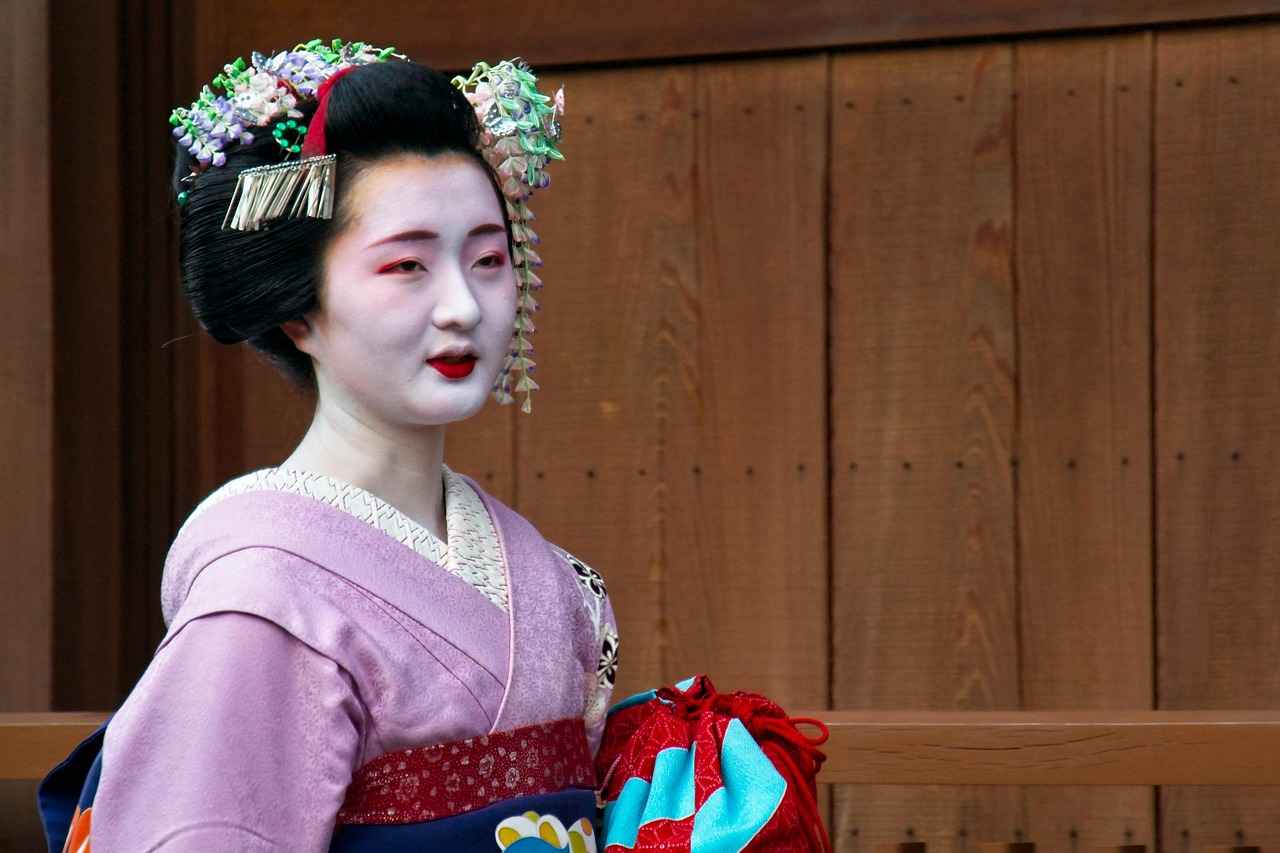
Conclusion: Embrace the Elegance
Incorporating a silk kimono into your wardrobe can truly transform your style. This elegant garment, with its rich history and cultural significance, offers a unique blend of tradition and modern fashion. Whether you are dressing for a casual day out or a formal evening event, a silk kimono can enhance your look and provide a touch of sophistication.
When it comes to styling your silk kimono, the possibilities are endless. You can wear it over a simple t-shirt and jeans for a chic casual look, or pair it with a fitted dress for a more polished appearance. The versatility of the kimono allows it to be layered over various outfits, making it a staple piece that can adapt to different occasions.
Choosing the right silk kimono is crucial. Consider factors such as color, pattern, and fit to ensure that it complements your personal style. Solid colors can offer a minimalist vibe, while bold patterns can make a statement. Additionally, selecting a kimono that fits well is essential for achieving a flattering silhouette.
Care for your silk kimono is equally important. Proper washing and storage techniques will help maintain its beauty and longevity. Always follow the care instructions, and consider using a gentle detergent to preserve the fabric’s luster. When not in use, store your kimono in a cool, dry place to prevent damage.
In conclusion, a silk kimono is more than just a garment; it is a timeless piece that can elevate your wardrobe. With thoughtful styling and proper care, you can enjoy this exquisite item for years to come, making it a valuable addition to your fashion collection.
Frequently Asked Questions
- What occasions are appropriate for wearing a silk kimono?
Silk kimonos are incredibly versatile! You can wear them for casual outings, formal events, or even as a stylish layer at home. Think of them as the perfect bridge between comfort and elegance, suitable for brunch with friends or a night out.
- How do I choose the right silk kimono for my body type?
Choosing the right kimono is all about understanding your body shape. Look for kimonos that enhance your silhouette. If you’re curvier, opt for a style that cinches at the waist. For a more relaxed fit, a straight-cut kimono can be your best friend!
- Can I wash my silk kimono at home?
Yes, but with caution! Hand washing in cold water with a gentle detergent is ideal. Avoid wringing it out and instead, lay it flat to dry. Treat it like the delicate treasure it is!
- What styles can I pair with my silk kimono for a casual look?
For a chic daywear vibe, try pairing your kimono with a simple tee and jeans or a casual dress. It’s all about layering—your kimono can be the standout piece that ties your outfit together!
- How should I store my silk kimono?
To keep your kimono looking fabulous, hang it in a cool, dry place. Avoid folding it to prevent creases. If you must fold it, use a soft cloth to protect the fabric. Think of it as tucking your precious silk into a cozy bed!
